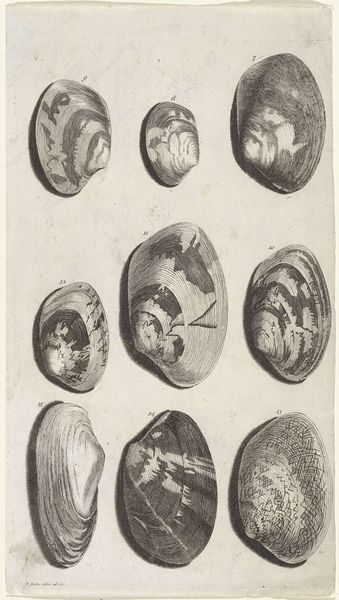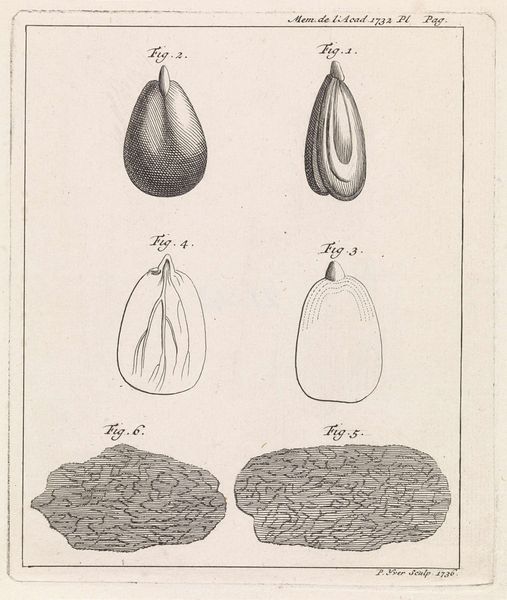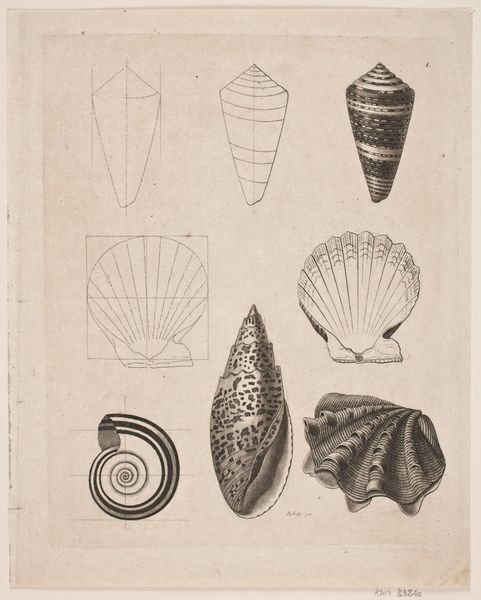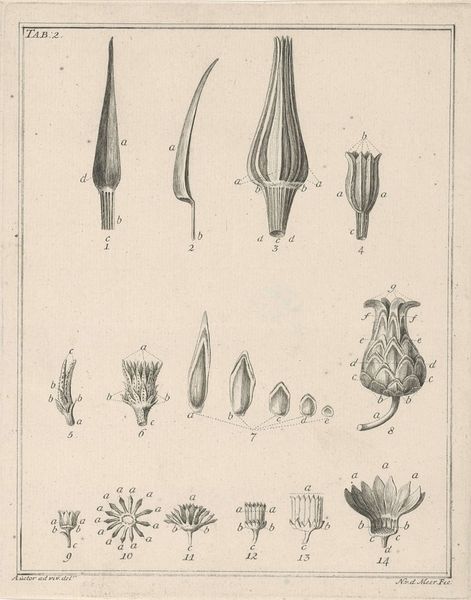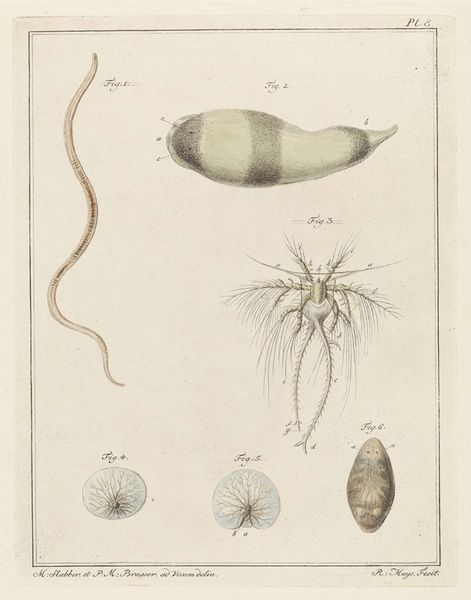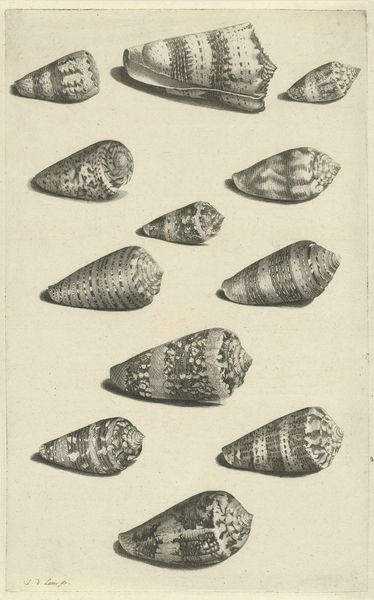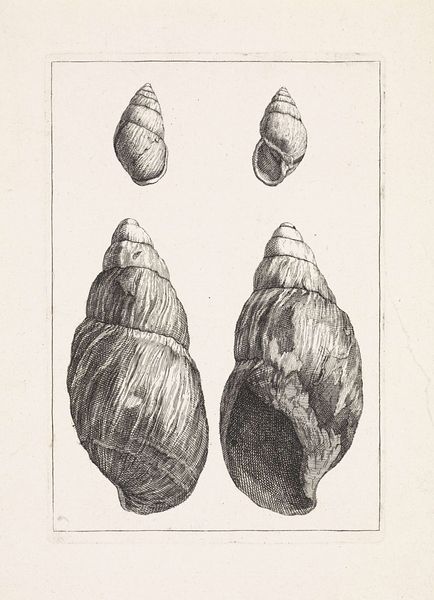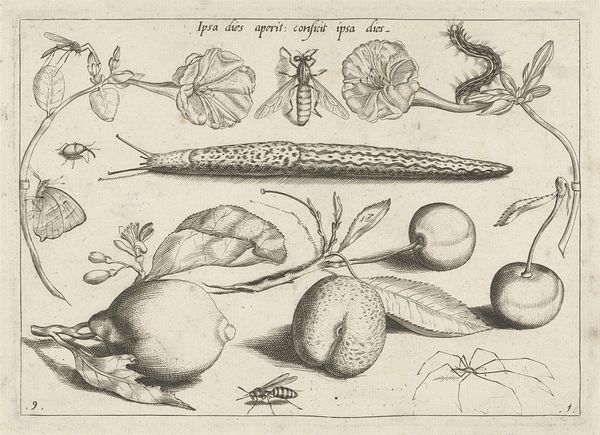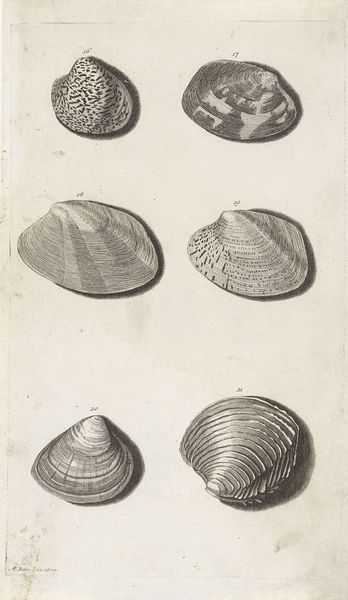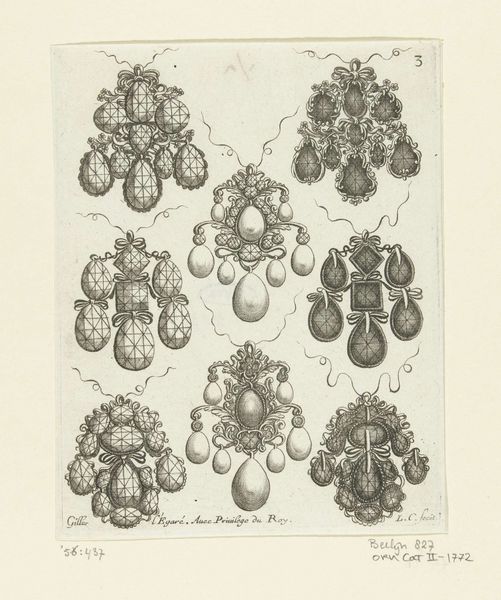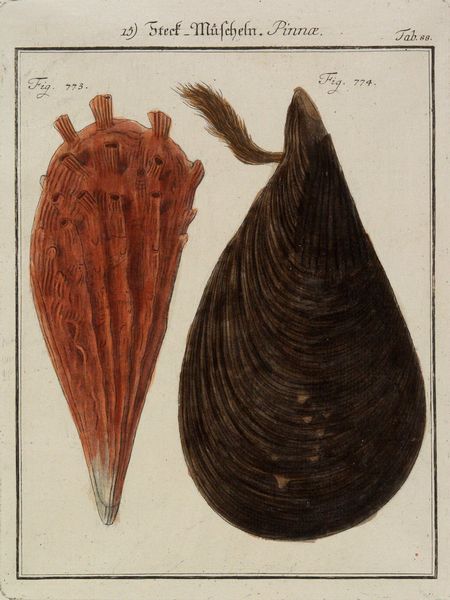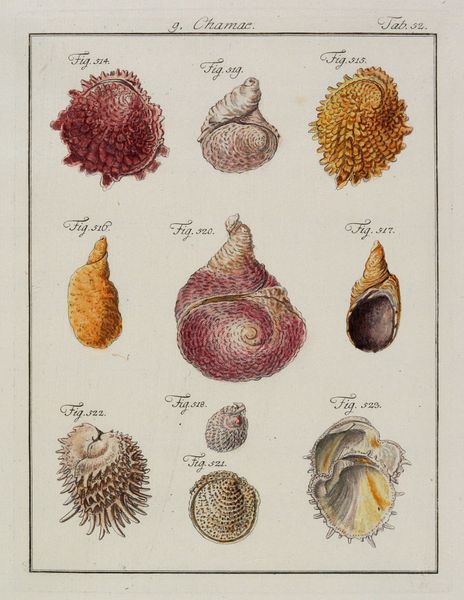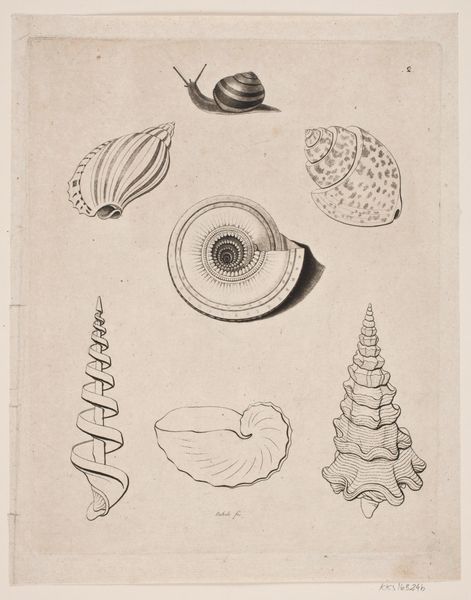
print, engraving
# print
#
old engraving style
#
line
#
academic-art
#
engraving
Dimensions: height 150 mm, width 109 mm
Copyright: Rijks Museum: Open Domain
Editor: We're looking at "Plantenzaad," a 1736 engraving by Pieter Yver, held at the Rijksmuseum. What strikes me is its almost clinical precision, like a botanical study. How do you interpret this work? Curator: It's interesting that you perceive it as clinical. While seemingly objective, such botanical illustrations were deeply entwined with colonialism and power. These images served to classify and catalogue the natural world, often for the benefit of European economic expansion. Consider how indigenous knowledge systems were often ignored or erased in this process. Editor: I hadn't considered that. So, the image is not just about knowledge but about power dynamics? Curator: Precisely. The act of naming, classifying, and controlling nature reflects broader societal hierarchies. Who gets to define knowledge, and for what purpose? Even the line technique, seemingly neutral, asserts a specific kind of authority – a detached, "scientific" gaze that reinforces a particular worldview. Editor: I see your point. It makes me question the presumed objectivity of scientific illustration from that time. Was there resistance to this imposed view? Curator: Absolutely! Examining other forms of representation from the same period, especially those created by marginalized communities, reveals alternative ways of understanding and interacting with the environment. This print provides an entry point to discuss those lost or suppressed perspectives. Editor: That adds so much depth! It transforms a seemingly straightforward image into a complex commentary on history, power, and knowledge. Curator: Indeed. It's a reminder that even seemingly innocuous images carry complex layers of meaning and historical baggage. Analyzing the image with intention and attention to these complex relationships enables richer interpretations.
Comments
No comments
Be the first to comment and join the conversation on the ultimate creative platform.
